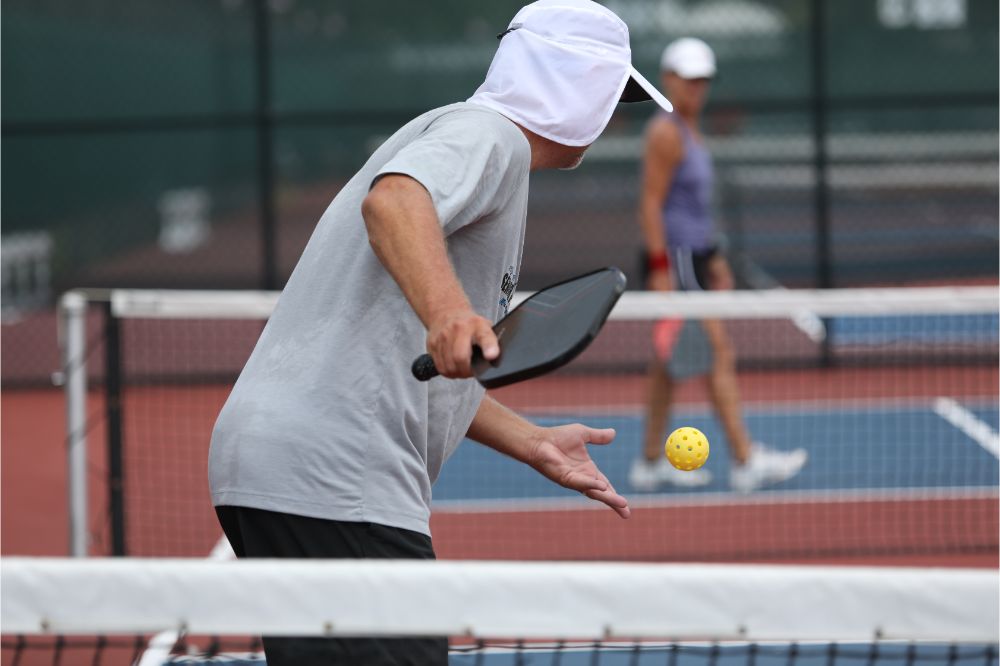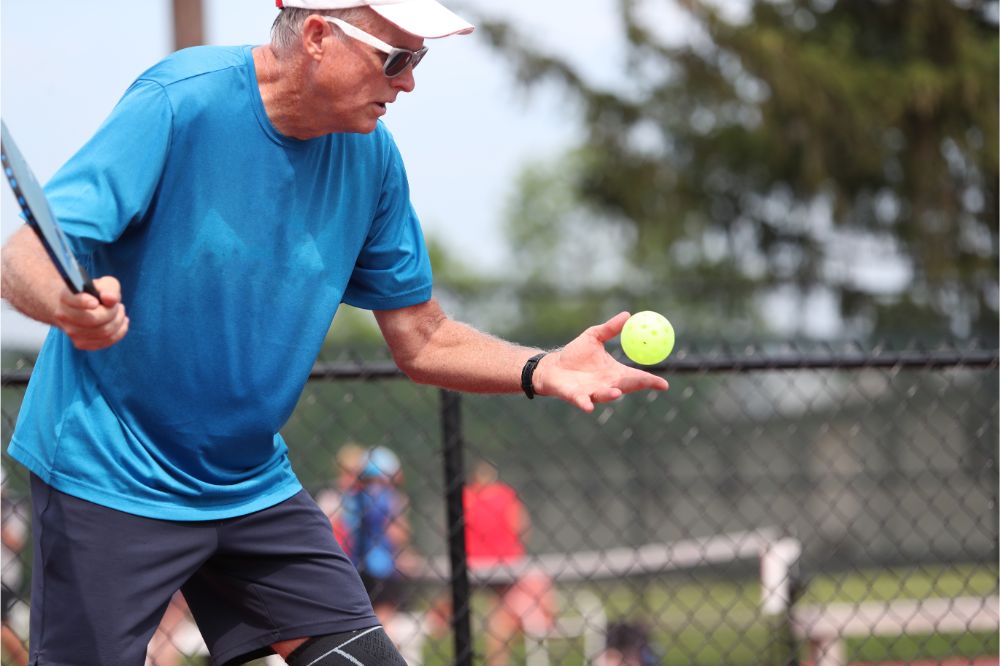Pickleball is a sport played on a court smaller than a tennis court but bigger than a badminton court. Moreover, it is also called “ping-pong” and combines elements of tennis and badminton. Today, it’s one of the fastest-growing sports in the United States.
Pickleball has more than 1 million players worldwide — and growing! If you are interested in playing a competitive pickleball match but don’t know how to get started, this detailed guide will help. It explains the basics of “let serve” and how to implement it in the game.
Importance of a Serve in Pickleball
The serve is an essential part of the game. It is the point at which players hit the ball back to their opponent, and it’s used to set up points and win games. Without good serves, you wouldn’t be able to win any games; you’d have no way of getting your opponent out of position or scoring points. Generally, the best players in all sports use their serves as their primary weapon.
A good serve has three main components: technique, power, and timing. It should be powerful enough that your opponent can’t block it with their paddle but not so powerful that it hits them directly in the face. And it should have enough pace so that if they don’t move fast enough when they receive it, they’ll still be able to get into position before hitting their return bounce shot back at you.
Purpose of a Let Serve in a Pickleball
A “let serve” in the game of Pickleball is a serving strategy that is used to maximize your chances of scoring a point. For example, a player can hit the ball as a backhand stroke or forehand stroke and then allow it to bounce on the ground before hitting it again.
Ultimately, they can let the ball sail through the air and then hit it as soon as it comes down. There are two main types of serves: short lets and long lets. “Short lets” are just like regular-handed spin serves, but they go only halfway across the court. Whereas “long lets” are one of the types of serves that go all the way across the court. The purpose of these different let types is to help players get an advantage over their opponents.
Some people believe that long passes give better players an unfair advantage because they can hit the ball very hard and still have a good chance of making it into the opponent’s end non-volley zone line. However, many great players use short lets to their advantage because they can easily control where the ball goes by hitting it softly.
Where Did the Term Come From?
The term “let” was coined by French tennis player Henri Cochet to describe the act of letting your opponent serve again. The word “filet” is a French word that translates to “net.” Cochet used this word to describe a strategy where you let your opponent serve again while keeping your serve in play. Therefore, the previous official rule for a typical “let serve” was adopted from tennis. According to another theory, the term “let” means “letting your opponent try the service again.”

Number of Let Serves Allowed
There are no set regulations on how many let serves are allowed in pickleball, but typically one or two lets are allowed throughout the game. Letting is a technique implemented to create an advantage for your opponent by hitting the ball before it reaches its destination. A defender can attempt to hit the ball before it reaches the opposing player, earning them a “let.”
Ways to Improve Your Let in Pickleball Game
If you’re having difficulty hitting your let in casual pickleball shots, here are a few tips to improve your game:
- Try to keep your hands tight when pulling the ball back. It will help you hit the ball harder and more accurately.
- Prioritize staying calm when playing, even if you miss a shot. It will help you make better decisions on the court and avoid making costly mistakes.
- Get in the habit of practicing shooting before each game. It will help you get used to playing under pressure and improve your overall consistency.
- Focus on getting your stance right. If you’re too far forward or too far back, you won’t be able to put power behind your shots.
- Work on your advanced serve technique! If you do this well enough, your opponent won’t have time to react before their shot lands.
Are There Any Current Changes to the “Let Rule”?
The let rule has been the standard for pickleball players for over two decades. However, the new version of the let rule went into effect in January 2021. In addition, the current let rule in pickleball has been modified recently to create a more fluid game. Here is a summary of the new let bounce rule.
A player receiving a let is allowed two passes before returning to their original side of the correct service court. If the incoming ball does not cross over the net, then the receiver may make another pass before returning to their original side. If the incoming ball crosses over the net, the receiver may only make one additional pass before returning to their original side. It replaces the previous requirement that a player receiving a let must return to their original side of the court immediately.
Reasons Why USA Rules Committee Changed the Let Rule
There have been many discussions lately about the let rule in pickleball. Many players are not sure what it is and why it changed. The original intent of the let rule was to allow defenders to position themselves behind the ball to retrieve it if it got passed back to their side of the court.
However, over time, this function has been largely replaced by other strategies, such as hitting short balls off the front wall or deep dink shots down the middle. As a result, many Pickleball Rules Committee members have decided to remove the let rule from its current form and instead just observe good playing behavior.
The Bottom Line
As a beginner, mastering this strategy will give you an edge over your opponents and help you win more games. As a courtesy, if you are ever in doubt about whether or not you are violating the let rule, ask your opponent whether they would like you to stop playing that way.

